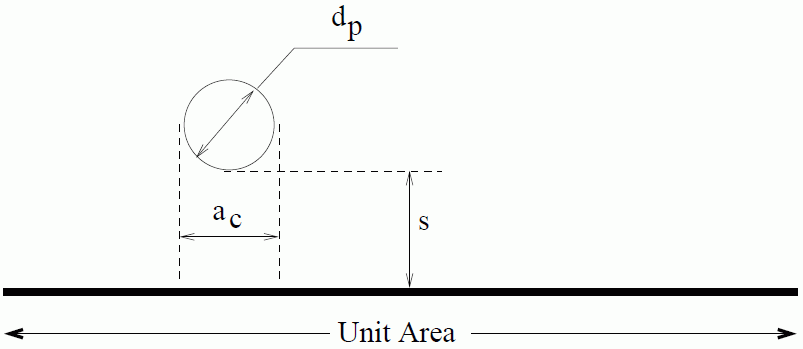Erosion
The erosion model simulates two mechanisms of erosion: impact wear and abrasive wear.
Impact wear predicts the rate of erosion due to direct impact of particles on the eroded surface. Abrasive wear predicts the rate of erosion due to abrasion of the surface by the particles.
The erosion model uses the particle phase information in the cell next to the wall to determine the following quantities:
- Particle volume fraction
- Granular temperature
- Particle velocity
The particle volume fraction and granular temperature are used to determine , the mass flow rate of particles impacting per unit area of the wall per unit time. The particle velocity adjacent to the wall is used to correlate with the mass loss rate of wall material.
Impact Wear Erosion
The impact erosion rate is defined as the mass of wall material eroded per unit area per unit time:
where:
- is the mass flow rate of particles per unit area impacting on the face
- is the erosion ratio
The diagram below is a schematic view of a single particle approaching a wall:

where:
- is the particle diameter
- is the average boundary area per particle
- is the average distance between the boundary and the surface of an adjacent particle
For a unit area, the mass flow rate of particles hitting the area is given by:
where:
(2396)
|
Mass of a single particle |
(2397)
|
Collision frequency of each particle |
(2398)
|
Number of particles adjacent to unit area |
(2399)
|
Average distance between the boundary and the surface of an adjacent particle |
(2400)
|
Average boundary area per particle |
| Particle volume fraction | |
| Maximum packing volume fraction |
Substituting for these quantities and simplifying Eqn. (2394) leads to the final form for erosion rate:
where:
- is the particle density
- is the particle granular temperature
- is the particle radial distribution function
When using multiple particle phases, is replaced by , the cumulative particle volume fraction when evaluating the contribution due to each particle phase.
The erosion ratio, , in Eulerian multiphase simulations uses the same erosion correlations as in Lagrangian and DEM multiphase simulations:
Abrasive Wear Erosion
The abrasive wear rate, , is defined as the mass of wall material eroded due to abrasion per unit area per unit time.
The mass of wall material eroded due to abrasion is given by the Archard formulation as below.
where:
- is the abrasive wear coefficient
The default value of 1E-2 kg/J is the high end of the recommended range of values, 1E-8 to 1E-2, mild wear to severe wear.
- is the normal force
- is the sliding distance.
Thus, is:
where:
- is the normal pressure exerted by particles at the wall
- is their sliding velocity at the wall.
The normal pressure, , is:
where:
- is the mass flow rate of particles per unit area impacting on the face
- is the normal velocity of particle phase at the wall.
The formulation for is described in Eqn. (2395).
Thus the final form of Abrasive Wear rate in Eulerian multiphase is: